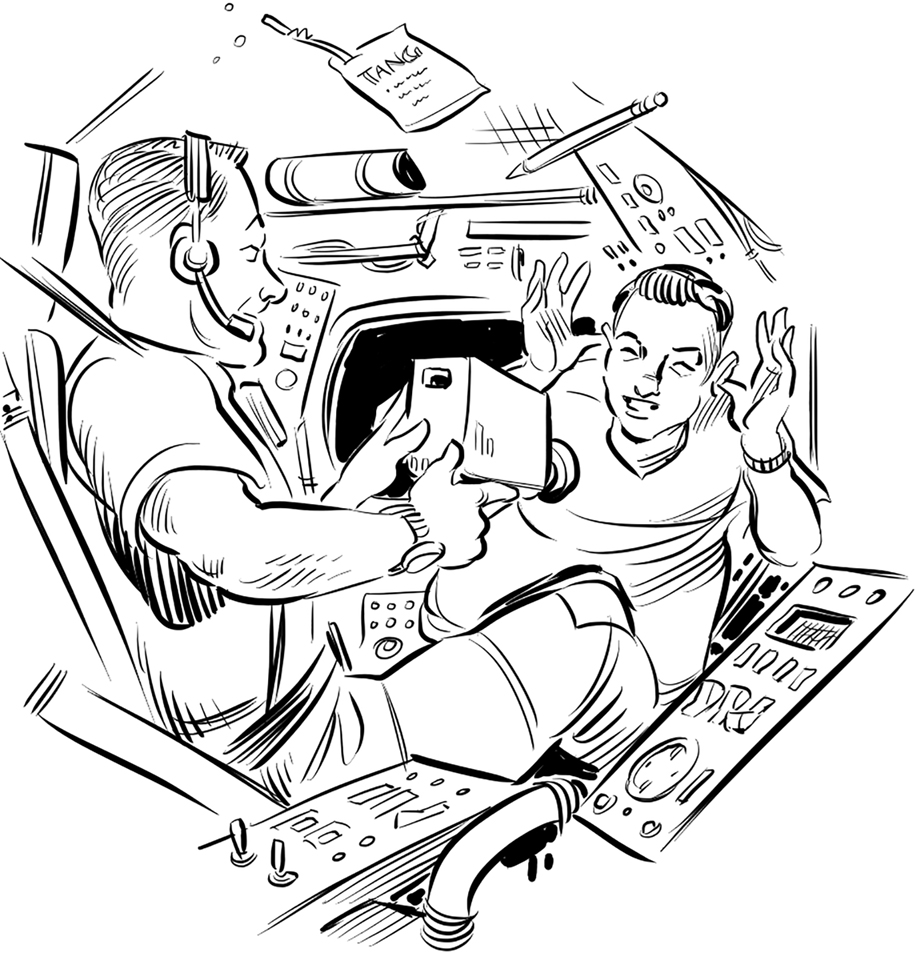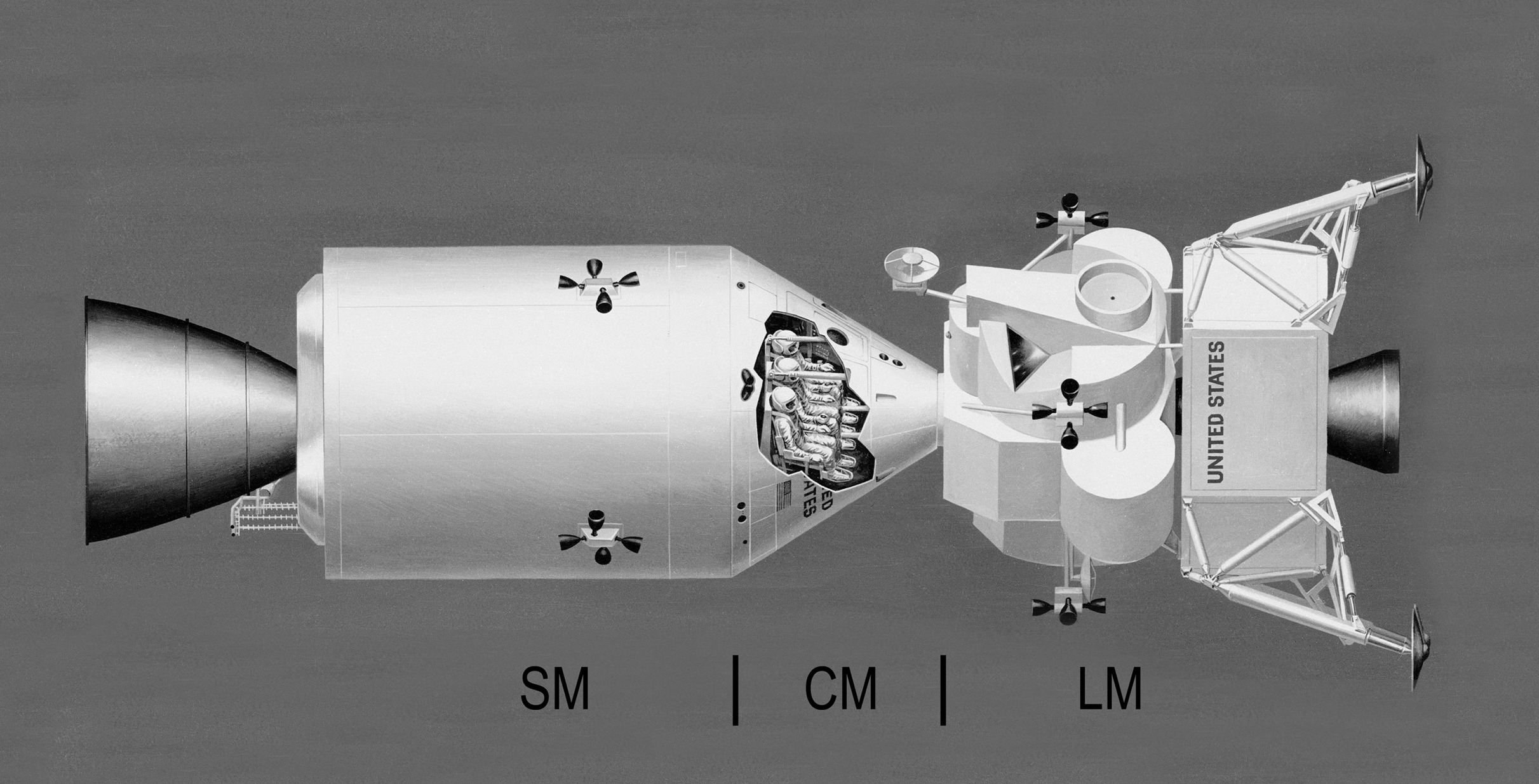1968
“Shoot for the moon; you might get there.” —Buzz Aldrin
On October 11, 1968, the Saturn V rocket carrying Apollo 7 tore through the skies above Cape Canaveral. Just a year and a half since the tragedy of Apollo 1, the United States was launching its first manned space mission since the disaster.
Apollo 7 was the first time the Apollo program had been into space with a three-person crew. The objective of the mission was to test the Apollo spacecraft and see how it held up. This must have been more than a little nerve-racking for the crew inside of the ship. However, astronauts Walter Schirra, Donn Eisele, and Walter Cunningham were both incredibly brave and competent. They moved forward in their mission without any hesitation.


The Apollo 7 crew separated the stage-two rocket (they weren’t going to need it to propel them to the moon) and fired off the engines on the CSM. And, for the most part, everything worked out great! The windows of the CSM fogged up a little bit, and it was difficult to poop in the CSM because you had to take your entire space suit off to do it, but there were a lot of fun parts, too. The crew took a video camera with them and sent videos of their adventure back to Earth. Kids across America could write letters to the astronauts, and then the astronauts would answer their questions live from the spaceship.
Apollo 7 practiced docking and maneuvering, then parachuted safely back to Earth. The capsule landed in the Atlantic and flipped upside down, but when the craft’s flotation bags inflated, they flipped it right side up again. (Whew!)
Apollo 7 had proved that the craft worked. Now it was time to go for the ultimate goal.
Commander Frank Borman and astronauts Jim Lovell and Bill Anders lifted off on December 21, 1968, aboard the historic Apollo 8 mission. Their goal? Become the first humans to travel to the moon.
Apollo 8 reached Earth orbit, powered up its thrusters, and blasted out into space. After 68 hours, 58 minutes, and 45 seconds of travel (over 2½ days), the Apollo 8 CSM finally entered lunar orbit. While orbiting the moon, the astronauts became the first people to see the dark side of the moon (no Transformers were there), and they saw the first “Earthrise” as it came into view.

Diagram of the components of an Apollo craft
Over the next 20 hours, the crew orbited the moon ten times, taking pictures, drawing maps, and trying to identify good landing sites for future missions. They also sent a couple of video transmissions back to Earth, which were broadcast on every TV in the world. The most famous of these was on Christmas Eve as Earth came into view over the lunar horizon. You can watch all these videos on YouTube!
After visiting the moon, the Earthlings engaged their thrusters and began the long return trip home. They reached Earth and reentered the atmosphere, screaming in at an unbelievable 24,000 miles per hour. The heat from the atmosphere was so intense that the outside of the Apollo capsule reached temperatures of over 5,000 degrees Fahrenheit. They splashed into the Pacific Ocean after 147 hours on their mission and were received as true heroes not only in America, but across the globe, too. Borman would receive a Congressional Space Medal of Honor for his heroism, and all three astronauts were recognized as “Men of the Year” by Time magazine.
NASA’s work wasn’t done yet, however, and the next two Apollo missions would test the CSM and LM. Apollo 9 spent ten days in Earth orbit, ejected the LM, tested the LM’s thrusters, and then successfully redocked it with the CSM before returning home. Apollo 10 repeated Apollo 9’s testing, but at the moon, where the crew sent back the first color TV footage of the lunar surface. This mission also ejected the LM, but the astronauts inside descended to about nine miles above the lunar surface before returning to the CSM and heading back to Earth.
Amazingly, despite all the hardships, failures, and trials that humanity had faced on its long, difficult quest to reach the moon, the impossible was now in our grasp. Putting a human on the moon was now a real possibility.
The only thing left was to do it.